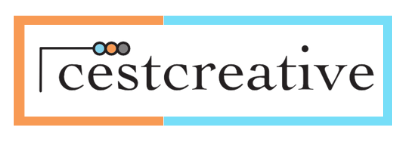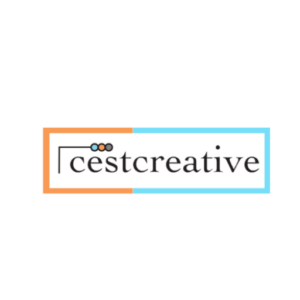Basic Supply List for making Epoxy Tumblers
So you want to make Epoxy Tumblers? Here is what you will need:
Come watch me make tumblers LIVE in the CraftOn Facebook Group!
The CUP
You want to use a double-walled cup for your epoxy tumbler because cold beverages can cause condensation on the walls of the container which will get under the epoxy and cause issues.
The TURNER
Technically, you don’t NEED a turner….you could hand-rotate your tumbler every few minutes for a couple hours and be just fine. But let’s be real, no one wants to do that! There are a lot of reputable turner companies out there – we recommend MH Turners – or you can watch YouTube videos and build your own.
The EPOXY
Everyone you talk to is going to have a favorite epoxy and 15 reasons why. The truth is, temperature, humidity, and even the way you handle the mixing can impact your results, so its going to take some trial and effort to get started. A lot of people start with Allumilite because it can be purchased at local craft stores. We currently use Counter Culture DIY. Other big names include but are not limited to: Faux Rizzle / FX Poxy, KS Resin, Art Works, Pro Marine…..the list goes on! Get some, try it out, find what works for you.
The ESSENTIALS
This is our list of essentials – you may see someone argue that you don’t need one or more of these items, and that’s fine. It’s just what we use!
· Gloves
· Mixing Container – some like to measure directly into graduated medicine cups
· Syringes (optional) – some like to measure using syringes and then put into a mixing container
· Stir stick – stainless steel or silicone coated are best, can use popsicle sticks
· Something to hold your cup on your turner – depending on the make of your tuner, you will need something to put inside your cup / on the rod of the turner. Pool noodles, foam footballs, specialty foam and other devices are available.
· Something to protect your work surface – silicone mat, aluminum pan
· Something to catch your glitter – paper plates, file folders, wax paper
· Sand paper – 220 grit for cup prep, 400 grit for epoxy layer sanding
· Mod Podge for some designs or glitter application
· Spray sealer – Clear matte sealer is a must (Rustoleum 2X Ultra is a fan fave)
· Spray paint to base coat your cup if desired
· Glitter – polyester glitter NOT craft glitter (see info on glitter below)
· Micas – mineral powder colorants
· Dawn Dish Soap
As a reminder, epoxy resin is a chemical and should be handled according to manufacturer’s directions. Please follow all recommended guidelines for safe handing.
TUMBLER TERMINOLOGY
This is a list of some common terms that are used in the tumbler community. They are meant to be definitions and not expressions of opinions on how or why.
Tumbler Prep or Tumbler Preparation – The process of preparing your tumbler for the first coat of adhesive or decoration. This can include but is not limited to: sanding, washing, and painting.
Epoxy Method – a process of using a thin coat of epoxy to adhere your base coat of glitter to your tumbler.
Cure Time – the amount of time that it takes for the epoxy to harden. This can be in reference to multiple steps – the cure time before applying another layer versus the final cure time for the last layer. ***Read your Epoxy manufacturers instructions – but a general rule is that it takes about 28 days for epoxy to fully cure, but it is 98% cured at 72 hours. It is hard to the touch around 24 hours.
Tacky Adhesive Method(s) – this method is where you apply a tacky adhesive to your tumbler for glitter application. Tacky adhesive goes on wet and dries tacky. This can be used for general application or for burnishing to get a linear holographic effect. Tacky adhesive manufacturers include but are not limited to: Aleenes Tack it Over and Over (which requires a 1:1 dilution with water) and Fairytale Glitter Fairy Magic Adhesive.
Burnishing – the process of rubbing the glitter to get it to lay flat. This is most often used to achieve the linear holographic effect.
Linear Holographic Effect – when holographic glitter lays flat, it will create lines of rainbows. These lines of rainbows are the linear holographic.
Glitter Terms:
- Holographic – has a rainbow effect, usually 3 colors or more
- Laser – has a colorful shimmer but less than holographic, usually two-tone
- Iridescent – Shimmery, somewhat see-through (translucent), usually needs multiple coats to get full coverage or a base coat of color. The base coat will show through.
- Metallic – shiny glitter, opaque
- Opal / Opalescent – sometimes often iridescent as well, softer colors, often translucent
- Craft glitter (PVC) and Polyester glitter (PET) – PET (polyethylene terephthalate) glitter is heat-resistant and generally solvent-resistant. PVC (polyvinyl chloride) glitter is cheaper, but it is not solvent-resistant
- Solvent-resistant – Glitter has a coating over it to give it color, but depending on the glitter, this coating might come off when exposed to chemicals.
- Mylar – Mylar is actually a trade name for BoPET. It is made up of the same thing as PET glitter, but the polyester sheets are stretched out into a thin film that you can buy as shards or in sheets.
- Cosmetic-grade – Although it may look the same as craft glitter, cosmetic-grade glitter is made to be used safely in beauty products. It has a smoother edge and is packed in a clean environment so there aren’t any contaminants.
- Environmentally safe – Environmentally safe glitter is made from plant-based materials instead of plastics. This means that it breaks down in about six months in compost or water. You don’t get as many varieties of shapes and color, but it is sustainable.


